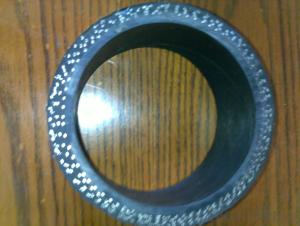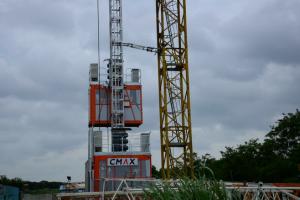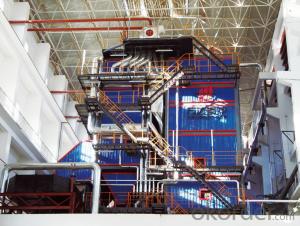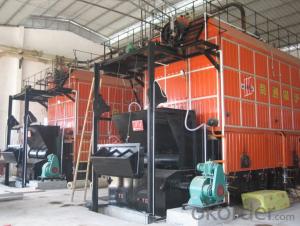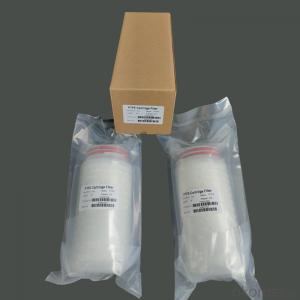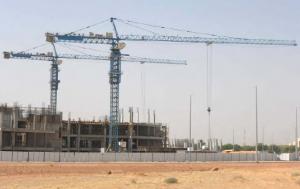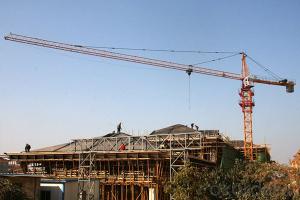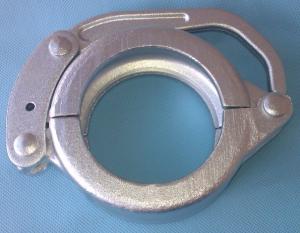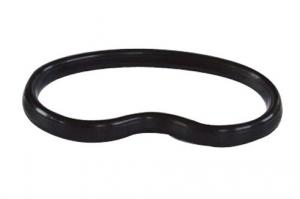Concrete Pump Rubber End Hose with 4 Steel wire
- Loading Port:
- China Main Port
- Payment Terms:
- TT OR LC
- Min Order Qty:
- -
- Supply Capability:
- -
OKorder Service Pledge
OKorder Financial Service
You Might Also Like


Detailed Product Description
rubber hoses concrete pump
1.Steel hose
2.4 plies of steel wire
3.Work Pressure:85BAR(1250PSI)
4.Burst Pressure:200 BAR (2940PSI)4
5.Working life:20000m³
6.The inside of hose is high abrasion resistant.
7.Integrated hose end and inner wall harden,prolong work life.
Relevant Information:
Name | Concrete rubber hose; Delivery hose; End hose; Concrete pump hose; Boom hose |
Size | 2"/2.5"/3"/3.5"/4"/4.5"/5"/6"or according to client’s requirement |
Length | 3M,4M or Any length |
Reinforcement | Steel wire, tire cord or fabric |
Hose End | Galvanized, inner wall harden |
Application | Schwing, Putzmeister, Sany, Zoomlion, etc |
- Q:Are there any maintenance tips to extend the lifespan of concrete pump spare parts?
- Yes, there are several maintenance tips to extend the lifespan of concrete pump spare parts. Regular cleaning and lubrication of the parts, proper storage to prevent corrosion, and routine inspection for wear and tear are essential. Additionally, using high-quality spare parts and following manufacturer's guidelines for maintenance and operation can significantly increase their longevity.
- Q:Can I reuse old concrete pump spare parts?
- Yes, old concrete pump spare parts can be reused as long as they are in good condition and meet the required specifications for the pump. However, it is important to properly inspect and test the parts before reuse to ensure they will function safely and efficiently.
- Q:What are the different types of concrete pump pistons?
- In the construction industry, various concrete pump pistons are frequently utilized. These encompass the following: 1. Single-acting pistons: Smaller concrete pumps employ these pistons with a single working side. They propel the concrete out of the cylinder during the forward stroke and rely on gravity to retract the piston during the return stroke. 2. Double-acting pistons: Larger concrete pumps utilize these pistons with two working sides. They push the concrete out during the forward stroke and pull it back during the return stroke, thereby enhancing the pumping process's efficiency. 3. S-tube pistons: Trailer-mounted concrete pumps commonly employ these pistons, which are shaped like an S. They assist in regulating the concrete flow by directing it through a series of valves and pipes. 4. Rock valve pistons: These pistons are specifically designed for pumping concrete with larger aggregates. With their sturdy design, they can handle the more abrasive nature of such materials. 5. Gate valve pistons: These pistons employ a gate valve system to manage the concrete flow. They are frequently used in high-pressure applications and provide precise control over the pumped concrete's quantity. In summary, the selection of a concrete pump piston depends on various factors specific to the construction project, including the pump's size, the type of concrete being pumped, and the desired flow rate and pressure.
- Q:What are the different types of concrete pump hoses?
- There are generally two types of concrete pump hoses: steel-reinforced hoses and fabric-reinforced hoses. Steel-reinforced hoses are stronger and more durable, suitable for high-pressure applications and long-distance pumping. Fabric-reinforced hoses are lightweight and flexible, ideal for smaller projects and shorter pumping distances.
- Q:What is the purpose of a concrete pump control panel?
- Operators use a concrete pump control panel to centrally control different functions and parameters of the concrete pump. By using this panel, operators can initiate and halt the pump, manage its speed and direction, and monitor and regulate the flow and pressure of the concrete being pumped. Safety measures like emergency stop buttons and alarms are also incorporated in the control panel to safeguard both the operators and the equipment. Additionally, the control panel may have diagnostic capabilities that present real-time data and alerts for maintenance and troubleshooting purposes. In summary, the aim of a concrete pump control panel is to improve efficiency, precision, and safety in the concrete pumping process.
- Q:What are the common causes of overheating in concrete pump spare parts?
- There are several common causes of overheating in concrete pump spare parts. One of the main reasons is improper lubrication. If the moving parts of the pump, such as bearings and pistons, are not properly lubricated, there is increased friction which leads to overheating. It is important to regularly check and maintain the lubrication system to ensure smooth operation and prevent overheating. Another common cause is excessive use or continuous operation without breaks. Concrete pumps are designed to handle a certain workload, and if they are used beyond their capacity or without proper rest periods, the components can overheat. It is crucial to follow the recommended operating guidelines and allow the pump to cool down periodically to prevent overheating. Furthermore, clogged or blocked cooling systems can also contribute to overheating. The cooling system in a concrete pump helps regulate the temperature by circulating coolant around the engine and other important parts. If the cooling system becomes clogged with debris or the coolant level is low, the pump may overheat. Regularly inspecting and cleaning the cooling system, as well as maintaining the appropriate coolant levels, can prevent overheating. Inadequate ventilation is another common cause of overheating. Concrete pumps generate a significant amount of heat during operation, and if the surrounding environment does not allow for proper airflow, the heat cannot dissipate effectively. This can lead to overheating of the spare parts. Ensuring that the pump is operated in well-ventilated areas or using additional cooling measures, such as fans or air conditioning, can help prevent overheating. Lastly, a malfunctioning or damaged pump component can also cause overheating. If a part of the pump, such as the motor or the hydraulic system, is not functioning correctly, it can put additional strain on other components, leading to overheating. Regular maintenance and inspection of the pump's components can help identify and address any potential issues before they cause overheating. Overall, proper lubrication, following operating guidelines, maintaining cooling systems, ensuring adequate ventilation, and regular maintenance are crucial in preventing overheating in concrete pump spare parts.
- Q:How often should a concrete pump spectacle plate be replaced?
- The frequency of replacing a concrete pump spectacle plate depends on various factors such as usage intensity, maintenance practices, and the condition of the plate. However, as a general guideline, it is recommended to inspect and potentially replace the spectacle plate every 500 to 1000 hours of operation or sooner if signs of wear or damage are observed. Regular inspections and timely replacements help ensure optimal performance and prevent any potential safety risks.
- Q:Are there any specific guidelines for the selection and installation of hydraulic components in concrete pump spare parts?
- Yes, there are specific guidelines for the selection and installation of hydraulic components in concrete pump spare parts. It is crucial to consider factors such as the pump's maximum pressure and flow rate, compatibility of components with the pump's system, and the quality and reliability of the components. Additionally, proper installation techniques and following manufacturer recommendations are essential to ensure optimal performance and longevity of the hydraulic system in concrete pump spare parts.
- Q:How often should concrete pump control levers be inspected and replaced?
- Concrete pump control levers should be inspected regularly, ideally on a monthly basis, to ensure they are in proper working condition. However, the need for replacement would depend on various factors such as the quality of the lever, frequency of use, and any signs of wear or damage. If any issues or concerns arise during inspection, prompt replacement should be considered to maintain safe and efficient operation of the concrete pump.
- Q:How long does it take to receive concrete pump spare parts after placing an order?
- The delivery time for concrete pump spare parts can differ depending on various factors. Firstly, it relies on the availability of the specific spare parts you have ordered. If the parts are readily in stock, the delivery time can be relatively fast. However, if the parts need to be manufactured or sourced because they are not in stock, it may take longer to receive them. Secondly, the distance between the supplier and your location also plays a role in the delivery time. If the supplier is nearby, the parts can be delivered within a few days. However, if the supplier is far away or in a different country, it may take longer due to shipping and customs procedures. Moreover, the delivery time can also be influenced by the shipping method you choose. Expedited shipping options can ensure quicker delivery but at an additional cost. On the other hand, standard shipping methods may take longer but are usually more cost-effective. Lastly, the efficiency and responsiveness of the supplier also factor into the equation. A reliable supplier with a streamlined ordering and shipping process will likely be able to deliver the spare parts more quickly. To sum up, the time it takes to receive concrete pump spare parts after placing an order can vary based on factors such as availability, distance, shipping method, and supplier efficiency. It is advisable to inquire about estimated delivery times when placing the order to gain a better understanding of when the parts will be delivered.
1. Manufacturer Overview |
|
|---|---|
| Location | |
| Year Established | |
| Annual Output Value | |
| Main Markets | |
| Company Certifications | |
2. Manufacturer Certificates |
|
|---|---|
| a) Certification Name | |
| Range | |
| Reference | |
| Validity Period | |
3. Manufacturer Capability |
|
|---|---|
| a)Trade Capacity | |
| Nearest Port | |
| Export Percentage | |
| No.of Employees in Trade Department | |
| Language Spoken: | |
| b)Factory Information | |
| Factory Size: | |
| No. of Production Lines | |
| Contract Manufacturing | |
| Product Price Range | |
Send your message to us
Concrete Pump Rubber End Hose with 4 Steel wire
- Loading Port:
- China Main Port
- Payment Terms:
- TT OR LC
- Min Order Qty:
- -
- Supply Capability:
- -
OKorder Service Pledge
OKorder Financial Service
Similar products
New products
Hot products
Hot Searches
Related keywords
